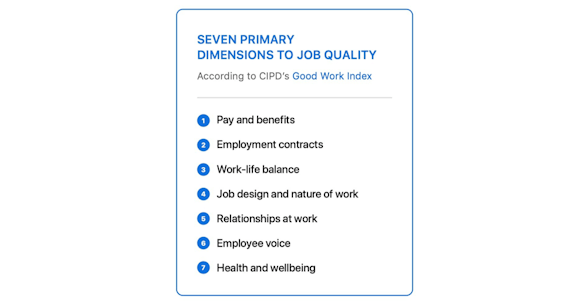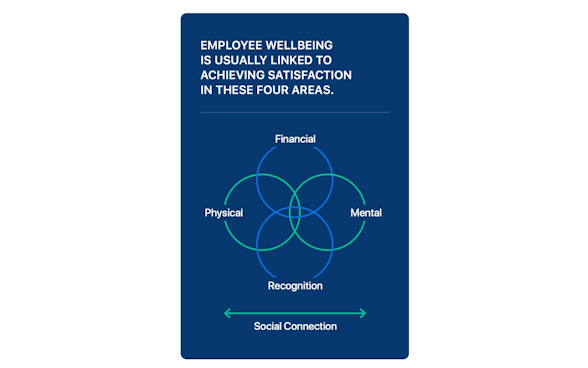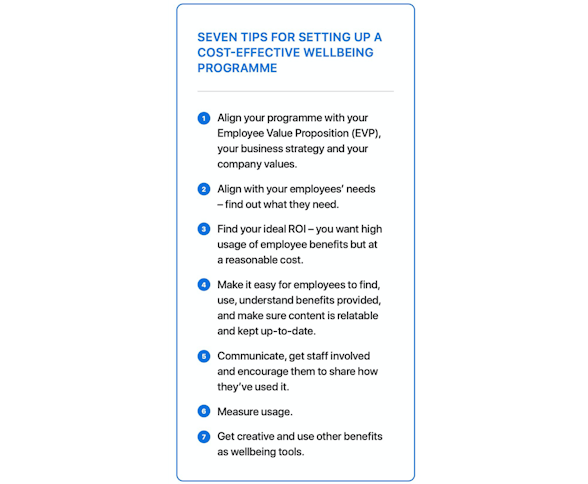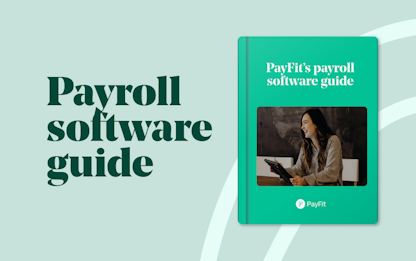- Blog
- |People management
- >Employee wellbeing
- >Employee wellbeing
Employee wellbeing pre and post-pandemic


Employee wellbeing – HR’s #1 priority
The number one challenge for HR professionals in 2020 was employee wellbeing with 37% reporting that it was most common within their department.
For several years now, organisations have been aware of the impact of employee wellbeing on company performance and finances. This was reflected in our data, with 50% of the HR professionals we surveyed revealing that employee wellbeing had the most significant impact on company success.

Did you know?
According to a study conducted by Deloitte, mental health problems cost UK employers a staggering £45 billion in 2019.
But despite this, findings from Buck’s Working Well report: A Global Survey of Workforce Wellbeing Strategies revealed that only 26% of UK companies had a wellbeing programme in place.
Post-COVID – identifying the need for wellbeing programmes to adapt
During the coronavirus crisis, we have seen conversations around mental and physical wellbeing increase.
Altogether, not all that surprising. After all, the initial lockdown, worsening financial crisis and potential long-term sociological and economic aftershocks have hardly been conducive to achieving a state of health and happiness.
Adding the isolation that has come with working remotely, and it becomes abundantly clear that the conventional mechanisms of supporting employee wellbeing have not been practicable during this unprecedented time.
With so many teams required to work remotely, HR professionals have had to face the daunting prospect of managing, monitoring and endeavouring to improve employee wellbeing from a distance.
However, organisations have found that the policies and programmes put in place before the pandemic were incompatible with remote work. This has led some to realise that there is much more to employee wellbeing than they had initially conceived. Consequently, many have looked to evolve their programmes to meet four critical criteria:
physical;
mental;
financial;
recognition.

Wellbeing benefits
For a long time, many employers were overly concerned with being seen as a “cool” company that could offer its employees an “unbelievable working atmosphere”.
Benefits like cinema or concert tickets, table tennis tables in the office, or after-work drinks were very much seen as the benchmarks for achieving employee happiness and satisfaction.
However, employers have slowly begun to realise that these sorts of benefits are only successful up to a point and that, in reality, something far more substantial is required.
Coronavirus has undoubtedly accelerated this process. In a world where offices no longer exist and social interactions are widely discouraged, less emphasis has been placed on these superficial benefits and more being put on wellbeing and how employers can help ensure their employees are happy and content.
“Wellbeing strategies for businesses have become less about generic solutions, such as fresh fruit in the office, and more about individual empowerment.”
Kate Whitelock, Head of Wellbeing at YuLife
A recent survey of employees by insurance providers Hooray found that less than a third of respondents were happy with the provisions made by their employer for their wellbeing. A further survey by YuLife, a life insurance provider, also found that over a quarter of employees felt that their employer did not look after their wellbeing.
The current climate has increased demands for benefits that provide a genuine service to employees—life insurance or income protection were among the most desirable employee benefits according to both surveys.
Typically, interest in these sorts of benefits is triggered by a significant life event, such as marriage, buying a home or starting a family. However, the pandemic has led to a major shift in attitude.
Individuals have become far more conscious of the fragility and dangers of life and, as a result, have expressed increased interest in benefits that will protect them and their families from a health and financial perspective.
Remote work troubles
Remote work is a polarising subject.
For all the perks that come with remote work – e.g. no commute, no office distractions and flexible hours – there are still some things that can be difficult to manage. One area where remote work has been extremely challenging is access to workstations.
For people living in big cities where space is at a premium, the transition from an established and organised desk in an office to a kitchen table, sofa, bedroom or even a bed, has been difficult and disruptive.
These conditions, hardly conducive to high levels of productivity, have been particularly seen among young people living in shared houses or small flats.
Many employers have become aware of this and have devised internal schemes that allow employees to have access to office equipment such as desks, chairs and monitors, or alternatively provide an allowance for employees to buy their own equipment.
Responses like these have helped to make remote work easier for employees and enabled them to set up practical workstations in their own home. However, a greater concern for employers has been supporting employees who have felt isolated away from the office environment.
Lockdown led to many people losing all their regular social interactions. Workers living on their own or having to isolate themselves because of their own or others’ health issues were particularly affected.
To counteract this, many companies organised virtual social events such as quizzes, drinks and exercise classes. While these measures certainly helped maintain working relationships and allowed more vulnerable employees to feel less isolated from their colleagues, they did not always provide enough support for those most in need of help.
YuLife noticed an increased use of Employee Assistance Programmes (EAP) and in some organisations, there has even been evidence of a shift away from EAP counselling to full access to mental health treatment through programmes like Smart Health.
Individuals spending more time at home, especially those safeguarding or isolating, have been anxious about using in-person services such as GPs and face-to-face mental health counselling. Consequently, employers have been looking at ways to improve their digital support for employees.
“A survey we conducted with YouGov revealed that there had been a 28% increase in the purchasing or downloading of wellness apps in the last three months. This includes meditation apps like Calm and Headspace as well as wearables and fitness tracking apps.”
Kate Whitelock, Head of Wellbeing at YuLife
Employee wellbeing in the future
The way employers and organisations approach employee wellbeing looks set to be one positive outcome of the pandemic.
Over the past six months, it has become clear that providing support for employees’ mental, physical, financial and social wellbeing will be important in ensuring better long-term stability and job satisfaction.
Concessions and treats are less and less likely to be appreciated as benefits over time and, instead, forward-thinking organisations and HR departments will be taking a more holistic approach to employee wellbeing.



Types Of Flexible Working - A Guide For Employers

What is Flexible Working Within the UK Workplace?

Understanding the Paternity Leave Changes in 2024

International Day of Transgender Visibility Guide

A Guide to 360 Degree Feedback for UK HR Teams

